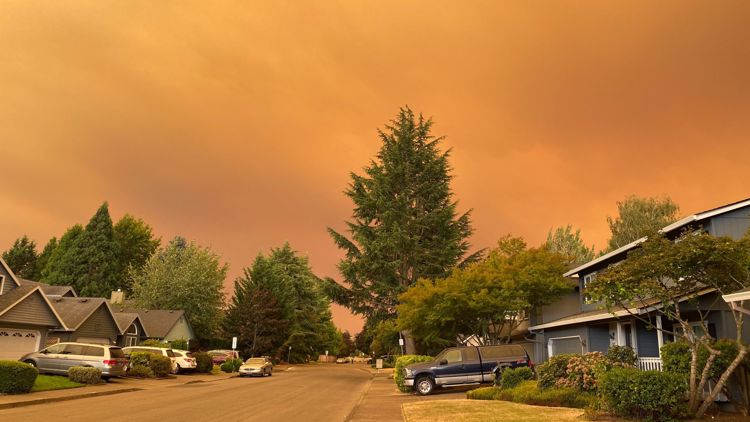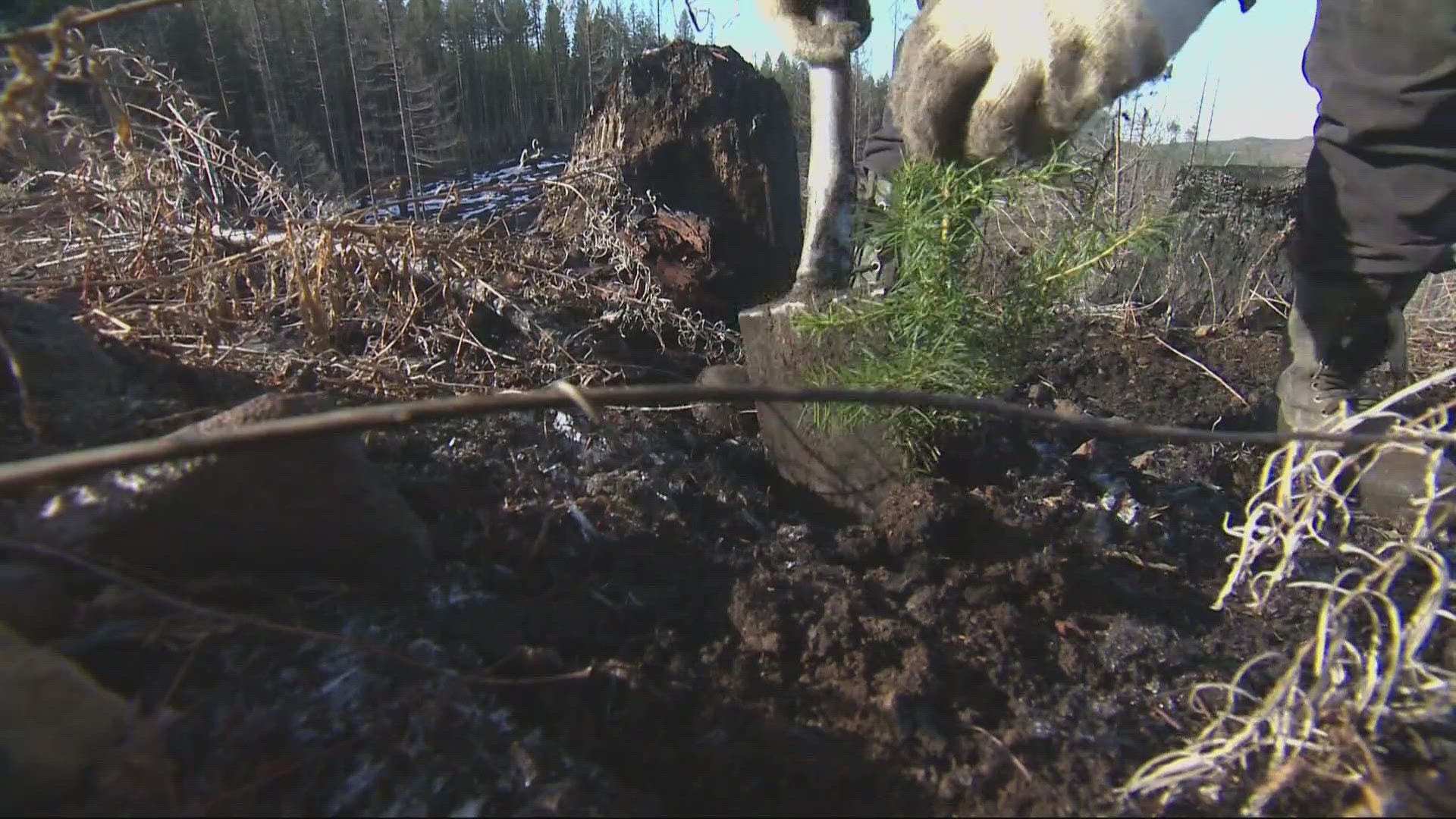PORTLAND, Oregon — Wildfire season is upon us in the Pacific Northwest. Right now, crews are working to contain multiple wildfires burning throughout the Portland metro area and surrounding areas.
Firefighters work hard to keep people, pets and homes safe – but residents can play a part in fire safety, too. And with fires moving rapidly, it can be scary and difficult to figure out what to do, while following updates from local officials and tracking evacuation orders. Here is what you can do to keep yourself, your home and your pets safe during a wildfire.
Make a plan
One of the first steps in preparing yourself for an emergency is putting together a basic emergency supply kit.
A kit could include some of the following items:
- One gallon of water per person per day for at least three days to be used for drinking and sanitation
- At least a three-day supply of non-perishable food and a manual can opener
- Battery-powered or hand crank radio
- Flashlight
- First aid kit
- Extra batteries
- Dust mask
- Garbage bag
- Local maps
- Cellphone with chargers and a backup battery
- Kits can be kept in your home, at your workplace or in your vehicle.
Another way to prepare for an emergency is sitting down with your family and friends to plan escape routes, ways to get in contact with one another, where you will go and what you will do in an emergency.
Keep a copy of this plan you decide upon in your emergency kit or another safe place where you can access it.
How to keep your home safe
There are a handful of ways that homeowners can work to keep their property safe in advance.
First, create a defensible space by clearing brush away from the home. This means ridding your property of tall grasses, pine needles, leaves, plants or packed garden beds close to the home, which can act as a wick to the candle and easily catch your house on fire if a wildfire is near.
Firefighters say these are especially dangerous if they lie within five feet of your home.
If firefighters arrive at a home surrounded by grasses and plants, they may not feel safe and the likelihood of them being able to protect you and save your home lessens, officials with the Washington Department of Natural Resources said.
Authorities also urge homeowners to use fire-resistant landscaping and harden homes with fire-safe construction measures.
The USDA Forest Service also recommends taking these actions to protect your home:
- Close all doors and windows inside your home to prevent draft.
- Close gas valves and turn off all pilot lights.
- Take down flammable drapes and curtains and close all venetian blinds or noncombustible window coverings.
- Turn on a light in each room for visibility in heavy smoke.
- Place valuables that will not be damaged by water in a pool or pond.
- If hoses and adequate water are available, leave sprinklers on roofs and anything that might be damaged
DNR officials also say that residents should be smart during wildfire season, as many fires are started by humans.
Even if a burn ban is not yet in place where you live, that does not mean it is safe to burn.
Evacuation notices
If authorities issue a Level 3 evacuation notice during a wildfire, this means you must leave immediately, as there is an immediate threat to your safety. Residents will not be allowed to return until conditions are safe.
Level 2 evacuations mean you should be prepared to leave at a moment’s notice, as dangerous conditions threaten your current location.
Level 1 evacuations mean you should prepare to leave your current location, as conditions could get worse.
More information about evacuation levels can be found here.
Homeowners who are told to evacuate should return home only when it is safe.
Once residents return home, officials say they should only drive if necessary. If you need to leave, watch for fallen objects in the road, downed wires, and weakened walls, bridges, roads and sidewalks.
Walk carefully around the outside of your home to check for damaged power lines, gas leaks and structural damage.
Use battery-powered flashlights rather than candles. Turn on your flashlight before entering a vacated building; the battery could produce a spark that could ignite leaking gas, if present.
National Weather Service warnings, watches
During fire weather conditions, the National Weather Service will likely issue one of several different types of watches, warnings or alerts.
It is important to note the differences between them.
NWS will issue a Red Flag Warning when fire conditions are ongoing or expected to occur shortly. The warning is meant to alert people to ongoing or critical fire weather patterns.
A Fire Weather Watch means the public should be prepared for upcoming weather conditions that could result in fires or extreme fire behavior. A watch means critical fire weather conditions are possible, but not imminent or occurring.
An Extreme Fire Behavior alert implies that a wildfire is likely to rage out of control. One or more of the following criteria must be met to issue this alert:
- Moving fast: High rate of spread
- Prolific crowning and/or spotting
- Presence of fire whirls
- Strong convection column



